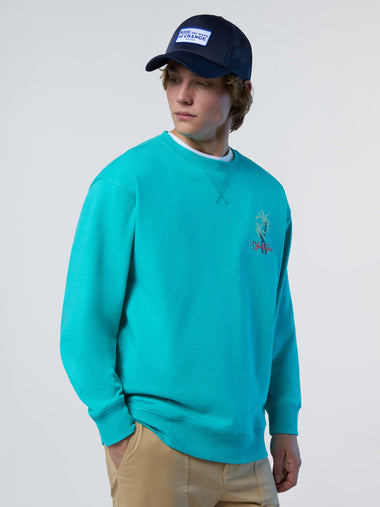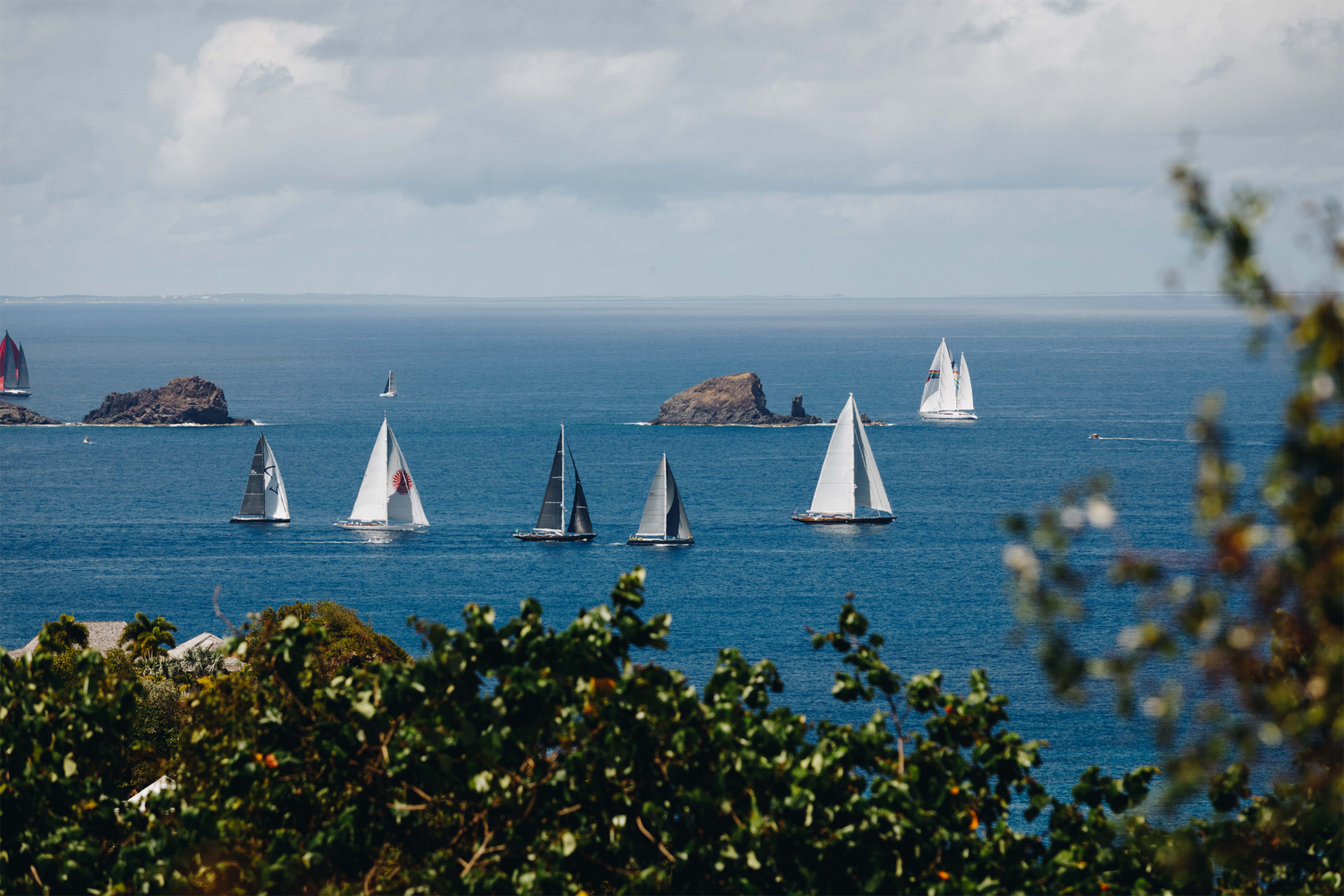BIANCA COOK’S NEW CHALLENGE LOOKS DIFFERENT THAN EXPECTED
BIANCA COOK’S NEW CHALLENGE LOOKS DIFFERENT THAN EXPECTED
Aspirations Ahead to The Ocean Race in 2022

North Sails expert and Auckland native Bianca Cook has logged plenty of ocean miles as part of delivery crews and on the last Volvo Ocean Race with Turn the Tide on Plastic. Now she’s taken on a new challenge: putting together a New Zealand-flagged entry for the 2022 Ocean Race. In November, she and partners Tony Rae and Daryl Wislang launched their V065 for the first time, just in time to win the Coastal Classic—though Cook says a boat without logos wasn’t at all what she envisioned.
“We covered up all the old Turn the Tide> branding with black,” she explains. “It looked very plain and simple.” But logos weren’t necessary to achieve their short-term goals: giving sailors and an onboard reporter the chance to race 120 miles from Auckland to the finish line in Russell, and gain some much-needed visibility. If the boat stayed in the shed, “nobody would know what was happening. We thought, ‘Let’s put the boat in the water and let’s do this.’ So that’s what we did.”
Winning the race was a nice bonus—even though that didn’t look anything like what Cook expected either. Very light conditions meant they didn’t finish until dawn the following day. “It’s actually quite funny, because it’s the biggest boat I’ve ever done the Coastal Classic on, and it’s the longest it’s ever taken me to get there.“
But “a win’s a win,” she says, adding how grateful she was to North Sails and the rest of the marine industry in Auckland for their enthusiastic support. “Without that, we’d still be in the shed.”

Raised on stories of “the Blakey days”
Bianca was born the same year Steinlager 2 won the Whitbread Round the World Race, and she grew up in an Auckland shipyard listening to stories about Peter Blake and “that romance of sailing around the world. The whole country got behind it, and knew what was going on.”
She learned to sail with her family on classic boats and then campaigned in Women’s Match Racing until that discipline was eliminated from the Olympics. In 2012, she was just about to fly to Antigua to help deliver the J Class Endeavour to Portugal when the Volvo Ocean Race (VOR) fleet sailed into Auckland. “That’s when my real passion for it grew.”
Working on Superyachts around the world introduced Cook to a lot of VOR sailors. “I was always asking how I could get involved,” she says. “When they brought out the rule to have more females on board, I sent my CV to anyone that would listen.” Nothing quite clicked, though—until a month before the start, when Dee Caffari called.
“I remember seeing Dee for the first time, I was a little bit petrified. As soon as I arrived, the first thing she said to me was, ‘okay, so we’re going to announce that you’re joining the team on Friday, don’t screw it up.’” Until that moment, Cook hadn’t been quite sure what was expected of her. “But when she said that I was like, ‘Oh yeah, I’m actually on the team. Okay.’”
Sailing around the world with Dee was incredible, Cook says. “You can be in a situation where you’re just over it or tired or hungry, not too much left in the tank. And she always has something to say that will give you that little bit of motivation to keep going.” But sailing into Auckland on a boat that represented “the United Nations” didn’t grab her fellow New Zealanders the same way that having their own boat to root for had in previous races. “As a country, we haven’t had a team to really get excited about and really invest Kiwi pride since 2012, so New Zealand’s love affair with the race has kind of gone away.”
For the rest of the race, Cook began to imagine sailing into Auckland again as part of a New Zealand-flagged crew. “I got talking to Tony Rae, and he’d been trying to get a New Zealand team in the race for the last two cycles. When I heard that, I thought, ‘Oh, okay, well then why don’t we actually try and make this happen?’”
Sailmaking beckons
After the VOR, a new opportunity appeared in Auckland: joining North Sails as a salesman. “I jumped at that,” she says. Though Cook didn’t know much about sailmaking, she soon recognized the significant overlaps between building 3Di sails and modern boatbuilding. “Building sails, you lay carbon down in a certain way over a mold—exactly the same as you do in boatbuilding.”
Cook continues to be impressed by North Sails emphasis on constant improvement. “It’s fantastic the way that the designers are always trying to make sails faster. They’ve got the technology to just keep pushing.”
She also appreciates the way America’s Cup technology is starting to trickle down to Auckland fleets like the Young 88s. “We don’t have double-skin mainsails yet, but you never know! The level of design work that goes into grand prix sails is exactly the same for what you’ll be selling to your local guy who’s just going cruising around the local area. It’s fantastic to see that amount of time and effort going into any job.”

The Ocean Race journey begins
Cook and her partners bought the old Turn the Tide on Plastic in 2019. It was a big commitment, but as Cook puts it, ”We’ve got to have a boat, otherwise we’re not in it. And so we bit the bullet and got it down here to New Zealand.” The goal was to get the boat in the water and “get as many young people on the boat as we could.” 2020 had other plans, though. “We were actually due to launch the day that we went into a nationwide lockdown.” Instead the boat stayed in a shed until the following November. Looking back, “I’m not really sure if
But her enthusiasm is infectious, and she’s not the only New Zealander to remember the previous races. “I’ve gone to give talks and people go, Oh, the Ocean Race. Is that the same as the Whitbread?” She laughs. “Here in New Zealand, the last time we had a boat in the race was Camper in 2011/2012. Almost ten years ago now!”
Sponsor search
Cook thinks they’ll have to look outside New Zealand to get to the start line, but for now they’re focusing on building local support and getting out sailing as much as possible. The lockdown has enabled them to tap into some great ocean racers who are currently stuck in Auckland. “We’ve had all these incredible sailors onboard, coaching the younger guys. But also going, ‘Whoa, I never thought I’d step back on one of these boats again!’” They’re also training onboard reporters. “So we’re getting footage, but it’s also giving them an opportunity to experience it. These guys haven’t necessarily been on a Volvo 65 before, or even gone offshore.”

First female NZ skipper?
The New Zealand media has jumped on the idea of Cook as skipper; she’d be the first female Ocean Race skipper, ever. ““Not so fast” , says Cook. “I’ve always said that I’ll do absolutely everything I can to get that boat on the start line, but how the team looks could be completely different.” Her ambition remains consistent: to have a Kiwi flagged boat on the start line in 2022. Right now, the priority is to give as many Kiwi sailors as possible the experience of racing a VO65. “When we get closer, we’ll start worrying about proper trials. At the moment, anytime we can get out on the water, we’re just making the most of it.”
Dreaming of a new wardrobe
Cook and team have modified an old Maxi kite into a training version of the new A4 specified for The Ocean Race, but Cook’s already anticipating all the improvements North designers will make to the entire inventory. “It’d be interesting to see the difference in the sails that we have now, and the sails for the next race.” Meanwhile, the group is planning a sailing tour of New Zealand in 2021 and hoping to get a different group of sailors onboard for each leg. “If we manage to inspire some kids down at the bottom of South Island to get involved in sailing, then I feel like we’ve achieved something pretty great.”




























